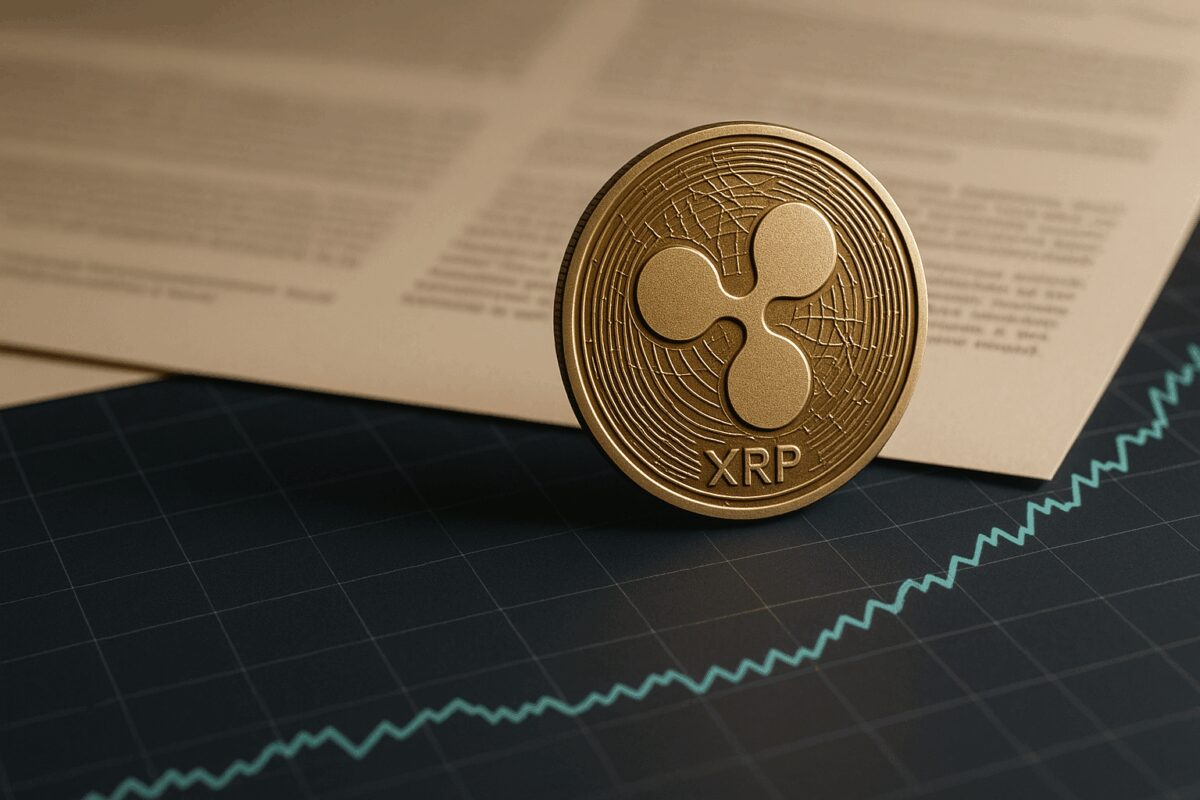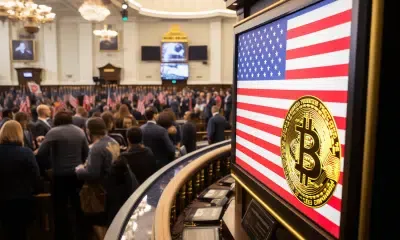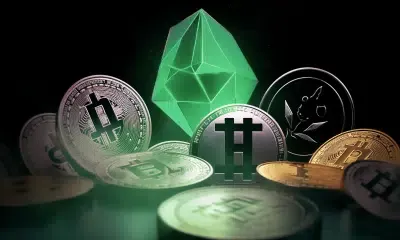
Is XRP a Ghost in the Machine or Poised for a Breakout?
Is XRP dead, or is it just misunderstood? People in crypto circles are split: is XRP, the currency powering the XRP Ledger, just a memory from earlier boom times, or is it quietly setting the stage for a major comeback? While some have already written its obituary, a good look at how it’s trading, the technology’s progress, its legal fights, and what its supporters are doing reveals a much more complicated situation.
There’s no strict checklist for calling a cryptocurrency “dead.” Typically, it means the project has flatlined – barely anyone is trading it (often below $1,000 monthly for ages), its total value is plummeting (think fractions of a cent), developers have vanished (no code updates on GitHub for more than half a year), its website is gone, and its online communities are deserted.
Getting kicked off major trading platforms often signals the end, as does the team walking away, a scam being exposed, or the project just not living up to its promises. XRP has definitely weathered storms, especially the drawn-out battle with Ripple and the SEC, so you can’t just label it “dead” without digging deeper.
XRP’s Market Pulse: Volume, Cap, and Liquidity
Come May 2025, XRP still holds a significant spot among top cryptocurrencies based on its overall market value. Recent figures peg XRP’s market capitalization somewhere between $137 billion and $138 billion, which gives it about 4% of the entire crypto market’s heft.
Trading hasn’t slowed down. Over the past day, anywhere from $2.7 billion to $2.98 billion worth of XRP was exchanged across different platforms. A few data points even suggested a 24-hour turnover nearing $6.44 billion, with the XRP/USDT pair on Binance alone accounting for a large chunk of that. The introduction of XRP futures on the CME Group also got off to a flying start, moving over $19 million in notional value on its first day.
Easy access to buying and selling XRP remains a key advantage. You can find it on many big-name global exchanges, such as Binance, Coinbase (which brought XRP back after a hiatus), Kraken, and Bitstamp, among others. This wide availability gets a boost from the XRP Ledger’s own decentralized exchange (DEX), where XRP acts as a go-between currency, helping transactions flow better. Even if its daily spot trading doesn’t rival Bitcoin’s or Ethereum’s, XRP offers substantial market depth, positioning it as a sensible choice for anyone building a varied collection of digital assets.
The SEC Lawsuit: A Multi-Year Saga Nearing Its End?
The long-running legal clash between the U.S. Securities and Exchange Commission (SEC) and Ripple Labs, which kicked off in December 2020, has truly shaped XRP’s story. The SEC claimed Ripple broke the law by selling XRP without registering it as a security.
July 2023 brought a pivotal turn when U.S. District Judge Analisa Torres decided that regular sales of XRP on public exchanges were not illegal securities sales. This was a huge win for Ripple, even though the judge also found that Ripple’s direct sales of XRP to big institutions did count as securities offerings. Because of that, in August 2024, Ripple had to pay a $125 million civil fine for those institutional deals.
By early 2025, things seemed to be moving toward a final agreement. Around March 2025, word got out that the SEC wasn’t going to fight the ruling about programmatic sales. Then, by May 2025, news broke that Ripple and the SEC had apparently hashed out a settlement. This preliminary deal reportedly had Ripple paying a smaller fine of $50 million. A judge did initially send back a joint request to make this official around May 15th or 16th, 2025, due to a technicality, but everyone expected them to try again. Some watchers believe this whole legal mess could be wrapped up by the middle of 2025.
This newfound legal clearness, especially the ruling about sales on exchanges, changes things dramatically. It means XRP can be bought and sold on secondary markets without the “security” tag hanging over it in those situations – a massive deal for U.S. exchanges and investors. Most people think settling this case will lift a heavy cloud that’s been holding down XRP’s price and scaring off big U.S. institutions.
Adoption: Navigating Headwinds and Seeking Tailwinds
There’s no doubt the SEC lawsuit put a damper on XRP’s uptake in the United States. Coinbase, for instance, stopped XRP trading in January 2021 and only started again after the positive court decision in July 2023. All this legal grey area made American financial players nervous.
Outside the U.S., though, Ripple kept pushing forward, concentrating on places like Asia, Europe, and the Middle East, where the rules were often more straightforward or just different. Ripple had already announced tie-ups with hundreds of financial groups worldwide even before the lawsuit was close to being over.
The expected end to the SEC saga should give XRP adoption a serious shot in the arm, both in the U.S. and globally. Once the legal fog lifts, American financial companies might warm up to Ripple’s payment technologies, which can use XRP for instant liquidity (ODL). Talk of a spot XRP ETF has also begun, which could bring in even more money from big investors.
Ripple’s Strategy and Reliance on XRP
Ripple, the company, wants to make global payments better, faster, and cheaper. A big part of their plan involves using technology to speed up international money transfers and cut their costs. They’re also diving deeper into turning real-world things (RWAs) into digital tokens. Ripple’s On-Demand Liquidity service (now under the “Ripple Payments” umbrella) uses XRP as a quick bridge between currencies for cross-border deals, trying to get rid of the old system of banks needing pre-funded accounts everywhere.
While Ripple has a lot of XRP, with much of it locked in escrow, the company insists it handles these reserves carefully. Getting the SEC case sorted is crucial for Ripple to use XRP freely in its U.S. business. Ripple also put out its own stablecoin, Ripple USD (RLUSD), in late 2024. The idea is for RLUSD to offer a steady value, pull in banks and companies to its network, and work in tandem with XRP.
XRP Ledger (XRPL): Continuous Evolution
The XRP Ledger itself is anything but static. Developers are constantly working to make it better, particularly for decentralized finance (DeFi) and putting real-world assets on the blockchain.
Some important upgrades include:
* Automated Market Maker (AMM): This is up and running, letting people trade and provide funds decentrally, right on the ledger. An AMMClawback feature got the green light in January 2025, so tokens that can be recalled, like RLUSD, can join AMM pools.
* Sidechains (EVM Compatibility): They’re aiming to launch an EVM-compatible sidechain (one that works with Ethereum tools) in the second quarter of 2025. This would let Ethereum developers bring their apps to a chain that connects with the XRPL. Axelar is looking like the top choice to build the bridge for this.
* Hooks (Smart Contract-like Functionality): While they’re being careful about adding Hooks to the main network, you can find them on the Xahau sidechain and a public test network. The goal is to add some lightweight smart contract features.
* Institutional DeFi Focus: The XRPL’s 2025 game plan heavily features tools for big finance, like a built-in lending system and better Decentralized Identity (DID) tools for staying compliant.
All this development shows up in network use. Messari noted big jumps for XRPL in early 2025, with more active users and new accounts popping up rapidly. The total accounts on XRPL climbed from about 5 million in January 2024 to almost 6.2 million by March 2025.
Beyond Payments: Expanding Use Cases
Making cross-border payments slicker is still a primary goal, but the XRPL world is now home to a growing variety of other uses:
* DeFi: The built-in AMM and the planned lending systems are essential pieces for DeFi.
* NFTs: A native NFT system (called the XLS-20 standard) lets people create, buy, sell, and manage digital collectibles, with marketplaces like xrp.cafe and Sologenic already active.
* CBDC Pilots: Ripple is deeply involved in creating digital versions of national currencies, working with central banks in places like Palau, Bhutan, Georgia, and Colombia. They’re using Ripple’s tech for this, though not necessarily XRP itself for the actual CBDC. XRP might come in handy as a link between different CBDCs.
* RWA Tokenization: Deals with companies such as Archax and Zoniqx are designed to put assets like gold and T-bills onto the XRPL.
Community and Global Regulatory Standing
The XRP community, sometimes called the “XRP Army,” is still incredibly active and loud on social media sites like X (what used to be Twitter) and Reddit. This passionate group is a real plus, keeping conversations going and helping the whole ecosystem expand.
How XRP is treated by regulators differs from country to country:
* Japan: Sees XRP as a crypto asset, not a security, which creates a friendly local scene.
* UK: Is still figuring out its rules; how XRP will be classified there is yet to be seen.
* EU: The MiCA regulation sets out a broad rulebook, but XRP’s exact status under it is still taking shape.
* Singapore & UAE: These places have clearer rules, and Ripple has gotten licenses to do business there.
The Verdict: Far From Dead
When you weigh all the facts – busy trading, a hefty market value, constant improvements to the XRP Ledger, new uses popping up beyond just payments, a dedicated worldwide following, and key wins in court that are clearing up legal uncertainties – saying XRP is “dead” just doesn’t fit the picture.
Sure, there are still hurdles, especially with the ever-changing rules around the globe and competition from other blockchains, stablecoins, and even upgraded old-school systems like SWIFT. Yet, XRP shows all the vital signs of a project that’s still relevant and has a future. The end of the SEC lawsuit, more than anything, looks like it could be a game-changer, possibly opening the doors for more big institutions to get involved and boosting overall market belief.
Some people still worry about Ripple holding too much XRP, thinking it makes things too centralized, but the company says it handles these funds openly. In the end, where XRP goes from here will hinge on whether it can play to its tech strengths, grow its network of users and uses, and secure its spot in the increasingly regulated world of global finance. The fog of doubt appears to be clearing, showing a digital coin that’s definitely still in the fight.




